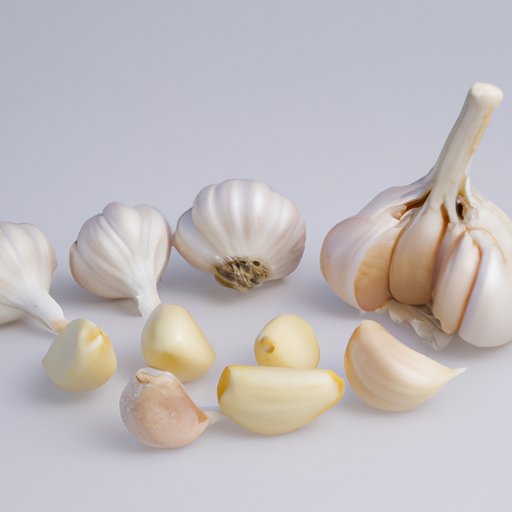Introduction
Garlic is a common kitchen staple that has been used for centuries as a flavoring agent in foods. It is a member of the Allium family, which includes onions, shallots, chives, and leeks. The bulb of garlic contains several cloves, each of which can be broken off and peeled to reveal the edible part of the plant. Garlic has a pungent flavor that is both savory and slightly sweet.
In addition to its culinary uses, garlic has long been believed to have many health benefits. Studies have shown that eating garlic can improve your overall health and may even reduce the risk of certain diseases. In this article, we’ll take a closer look at the nutritional content of garlic and explore the various ways it can benefit your health.
Health Benefits of Eating Garlic
Garlic is a nutrient-dense food, meaning it contains a high concentration of vitamins, minerals, and other beneficial compounds. One clove of garlic (approximately 3 grams) contains approximately 4 calories, 1 gram of carbohydrates, and trace amounts of protein and fat. Garlic is also packed with essential vitamins and minerals, including vitamin C, manganese, selenium, and iron.
In addition to its nutritional content, garlic has been linked to a number of health benefits. Studies have shown that eating garlic can help lower cholesterol levels, reduce blood pressure, and improve immune function. It has also been found to possess antioxidant and anti-inflammatory properties, which can help protect against oxidative stress and disease.
Garlic may also help reduce the risk of certain diseases. A 2018 study published in the journal Nutrients found that regular consumption of garlic was associated with a lower risk of developing colorectal cancer. Additionally, another study published in the same year in the Journal of Nutrition and Metabolism found that garlic extract may help protect against the development of type 2 diabetes.

How to Incorporate Garlic into Your Diet
Despite its many health benefits, there are still some misconceptions about garlic and its role in our diets. Many people incorrectly assume that garlic must be consumed raw in order to reap its full health benefits. However, this is not necessarily true. While raw garlic does contain more beneficial compounds, cooked garlic still retains many of its health benefits.
There are many ways to incorporate garlic into your diet. Fresh garlic can be chopped, roasted, or sautéed and added to a variety of dishes. You can also use garlic powder, garlic salt, or garlic oil to add flavor to your meals. No matter how you choose to prepare it, garlic is a flavorful and nutritious addition to any meal.
Conclusion
Garlic is an incredibly versatile ingredient that has been used for centuries for its culinary and medicinal properties. It is rich in essential vitamins and minerals and has been linked to a number of health benefits, including improved cholesterol levels, reduced blood pressure, and increased immune function. Additionally, eating garlic may help reduce the risk of certain diseases, such as colorectal cancer and type 2 diabetes.
Garlic can be easily incorporated into your diet by adding it to a variety of dishes. Whether you choose to consume it raw, roasted, sautéed, or in powder form, garlic is sure to add flavor and nutrition to any meal.
(Note: Is this article not meeting your expectations? Do you have knowledge or insights to share? Unlock new opportunities and expand your reach by joining our authors team. Click Registration to join us and share your expertise with our readers.)
